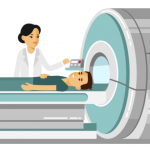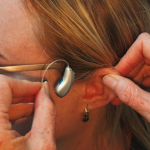Aging is a normal part of life, and just like the rest of the body, the brain changes as we get older. In normal aging, most people will eventually experience some changes in the way they think, like slower processing speeds or certain types of memory loss, although skills and knowledge tend to remain stable or are even improved over time. The brain changes underlying decline in function are collectively known as neurodegeneration, which is the progressive loss of structure or function of neurons. While everyone experiences some degree of neurodegeneration in their lifetime, it can sometimes happen too quickly or too severely, becoming pathological. Pathological brain aging can range from mild cognitive impairment, which involves more difficulties than normal aging but does not significantly impact the life of the individual, to a more profound loss of mental ability, known as dementia, that severely impacts the affected individual’s ability to live independently.
Dementia can be associated with a number of neurodegenerative diseases. The most commonly known is Alzheimer’s disease. During the progression of these age-related diseases, the individual’s physical and mental condition worsen over time, and the patients’ quality of life often deteriorates rapidly. Almost everyone knows someone who is affected by dementia, whether it is a neighbor, a friend, or a family member, and knows how difficult these diseases can be, not only for the person with the disease, but also for their caregivers. Unfortunately, this will only become more common because, as life expectancy increases over time, so does the number of people suffering from a neurodegenerative disease. Because of this, neurodegenerative diseases are not only a personal health issue, but also have considerable social and economic consequences, costing billions of dollars each year. For these reasons, it is important that we continue to invest in research on dementia and neurodegeneration so that we can better understand and treat disease progression and support those who are affected by it.
Of course, many different physiological processes happen as the body ages, ranging from the more obvious, for instance grey hair or hearing loss, to the less visible, like changes in your brain. One of these invisible changes is oxidative stress. As a by-product of normal metabolism, brain cells produce chemicals called highly reactive oxygen species (ROS) that can damage or kill cells if left unchecked. Fortunately, the brain has a way to neutralize excess ROS and keep everything in balance through antioxidants. However, ROS can also be produced through other processes such as inflammation and changes in cellular metabolism due to disease. Oxidative stress is what happens when there is too much ROS for the antioxidant system to handle, leading to cell damage. Like neurodegeneration, some degree of oxidative stress does occur in normal aging, in association with slight declines in motor and cognitive functions, but too much oxidative stress is considered pathological and has been linked to dementia. While many of the mechanisms of pathological aging are yet to be understood, studying specific processes like oxidative stress can help us understand neurodegeneration, and eventually lead to improvements in the treatment and prevention of neurodegenerative diseases.
Thanks to advances in imaging techniques, like magnetic resonance spectroscopy, we are now able to study metabolic processes like oxidative stress in the brain. Magnetic resonance spectroscopy (MRS) is a non-invasive imaging technique using the same equipment and principles as magnetic resonance imaging (MRI) but allowing us to acquire information on brain chemistry instead of images of brain anatomy. The magnetic field strengths of this imaging device can vary, which is important because some metabolites like glutathione are harder to detect at lower field strengths (e.g., 3 Tesla or 1,5 Tesla) compared to a higher field strength (e.g., 7 Tesla). Using MRS at high field-strength, we can detect the antioxidant glutathione in the living brain and assess how it changes with age.
The ability to detect oxidative stress will provide a tool to test treatments targeting oxidative stress that have the potential to help delay or reduce the severity of age-related dementia. Research in healthy adults can improve our understanding of healthy aging and provide data with which to compare the effects of age-related diseases. The overall goals are to better understand healthy aging as well as risk and prognostic factors for these age-related diseases. This kind of knowledge would benefit both patients and caregivers, and promote the advancement of treatment and prevention strategies for diseases with great social and economic impact. There are still many open questions in this growing field, but we hope this type of research brings us one step closer to understanding healthy and pathological aging, as well as treating and preventing age-related diseases, leading to an increased quality of life for the elderly population of our communities.
Flavie Detcheverry is a PhD student in biomedical engineering at the Université de Montréal. Her research project at the MIND lab under the supervision of Professors Badhwar and Narayanan, is to study level changes of brain metabolites using magnetic resonance spectroscopy in the brain, and using mass spectrometry-based metabolomics in blood. She is passionate about learning and being involved in scientific research and science communication.




